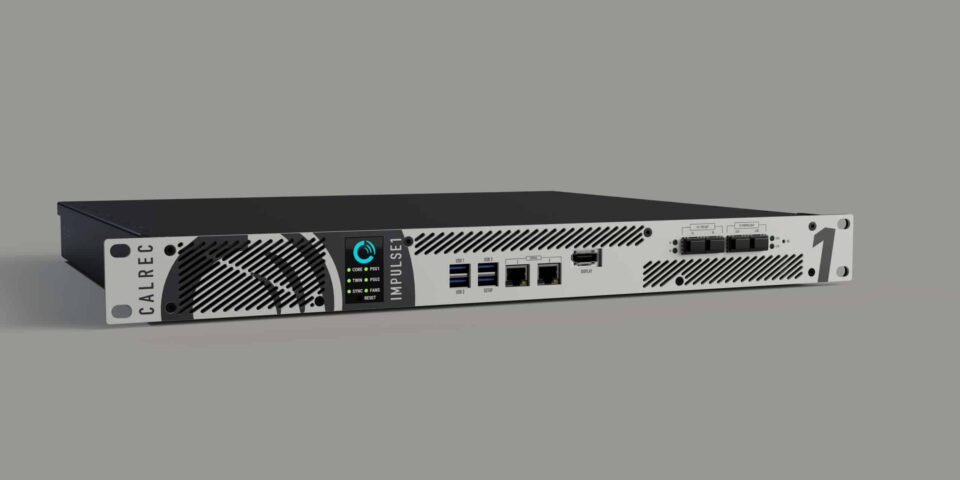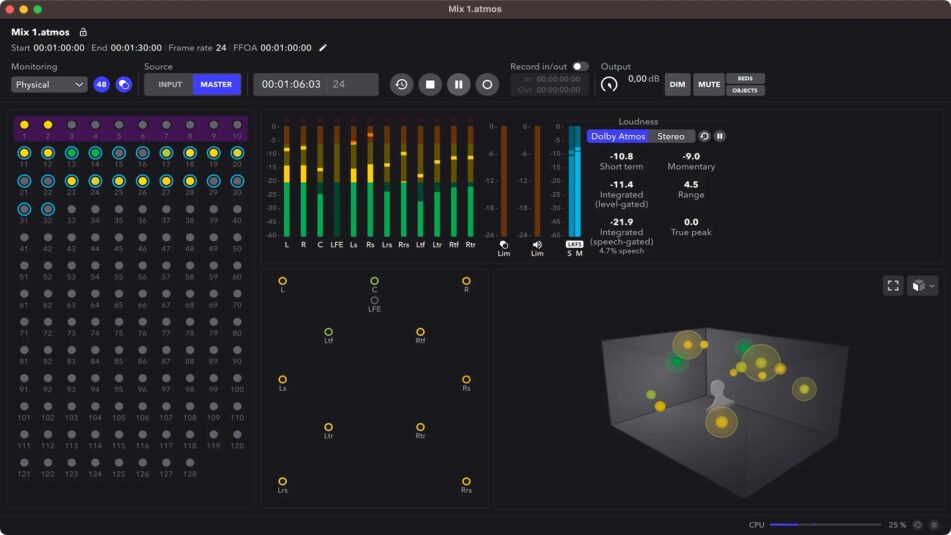NAB 2023: IP, Immersive, and Streaming Audio Are Here; AI Is on the Horizon
The 2023 NAB Show last week marked the 100th anniversary of broadcasting’s biggest event — and set the tone for the next century of technological change.
IP Path Is Clear
IP has become audio’s Yellow Brick Road, with the ST 2110 standard, which describes transport of digital media over a network, and its numerous “dash” supplements providing the guardrails as broadcast audio moves deeper into an IP environment.
Calrec’s new ImPulse1 IP audio-processing and -routing engine, for example, made its NAB Show debut. It’s a compact iteration of the ST 2110–native ImPulse platform, and its new 128-input-channel DSP pack offers entry-level pricing. Like other IP products, it also reflected the persistent impact of COVID shutdowns.
“What Calrec are doing is learning how to support customers in both REMI/at-home and distributed environments,” said Calrec Head of Sales and Marketing Henry Goodman. “Especially in a cloud-based environment. Production doesn’t happen in just one place anymore, not just the venue or the studio. It’s in the cloud, and the products have to reflect that.”
Another example is Lawo’s new mc²36 xp audio-production console, which supports up to 256 DSP channels and offers IP network and processing redundancy.
The IP virtualization trend extends firmly to comms and IFB applications. Telos Alliance’s Infinity Virtual Intercom Platform (VIP), a full-featured cloud-based intercom system, makes cloud-based media-production workflows available on any device — smartphone, laptop, desktop, tablet — through an HTML5 browser or an Android or iOS App.
The same goes for testing and monitoring, as illustrated by TSL’s new MPA1-MIX-NET audio confidence monitor, part of the company’s path to IP. But, cautioned TSL Director, Products and Technology, Mark Davies, the IP user cohort is widely inconsistent in terms of knowledge. “Audio being carried on IP is becoming the norm now,” he explained, “so we’ve moved away from the early adopters. Which has both a good and a bad side: as a vendor, we can sell a lot more kit because it’s the new standard, but now you’ve got people who haven’t been learning and understanding the technology. The early adopters know all the parameters, whereas now there are people who want to do it just because it’s easy. For us as a vendor, that takes a lot of support.”
Immersive Audio
Immersive sound is still on broadcast audio’s agenda. The first microphone to hit the 8-channel mark, Audio-Technica’s BP3600, was on display at NAB 2023. Sennheiser’s new AMBEO 2-channel spatial-audio system for live-broadcast applications offers a way to bring immersive sound to stereo-monitoring and -playback devices.
Dolby, of course, has long staked out the immersive high ground with its Atmos platform. Some new wrinkles for the platform were exhibited: the new Atmos Renderer application integrates the Dolby Atmos Production Suite and the Dolby Atmos Mastering Suite into an all-in-one solution for Dolby Atmos creators, underscoring a larger trend toward not only more cost-effectiveness but also more user-friendly operation for many, if not most, new audio platforms. That’s part of the industry’s broader recognition that the upcoming generation of audio professionals may not have the background needed to dive deep into every new system.
Sports has moved deeper into the streaming ecosystem, where it’s encountering some challenges — loudness management, for instance — that would have been familiar two decades ago in the OTA world. Addressing the loudness issue for OTT streamcasting may be more complex than it was for OTA broadcasting, given the sheer numbers and diversity of types of distributors.
“As OTT players become more interested in live sports, one of the things they’re finding are problems such as loudness management,” noted Dolby VP, Commercial Partnerships, Javier Foncillas. “One of the problems is that the end users’ devices are all unique: sometimes you go through an AppleTV, sometimes you go through a Fire Stick or a soundbar — all the different ecosystem issues we’ve been dealing with for quite a while. There’s not a one-size-fits-all solution, so a lot of it is very custom engineering. That’s a big challenge.”
An Evolutionary Future
As has largely been the case in the digital-audio era, forward motion is more incremental and iterative than explicitly revolutionary. Digital audio is a world of software updates, such as the V3.3 software update for Solid State Logic’s System T platform, which offers integrated control of the Dolby Atmos Panner Plug-in as well as production tools optimized for immersive audio.
If there is a new boundary to peer over, it’s the AI event horizon. The MIXaIR platform from Salsa Sound, which helped develop “augmented” crowd sound for broadcasts during COVID sports-venue shutdowns, demonstrated how artificial intelligence can be harnessed to automate sports-audio mixing. And Skywalker Sound showed its CODA automated workflow, which can reduce versioning time for media productions from weeks to a matter of hours.
These products arrive at a time of looming layoffs as the broadcast-media industry looks to reduce costs. AI engines could provide some relief by automating tasks hampered lately by manpower shortages, even as they have the potential to render redundant many seemingly untouchable positions.
Kudos to the audio winners of fifth-annual Product of the Year Awards at a ceremony during the show. Honored in the Audio Production, Processing and Networking category: Calrec’s Argo next-generation broadcast-audio console, and Clear-Com’s Arcadia with HelixNet Integration, combining HelixNet, FreeSpeak, Encore, other 2W/4W endpoints and third-party Dante devices in an integrated system.


